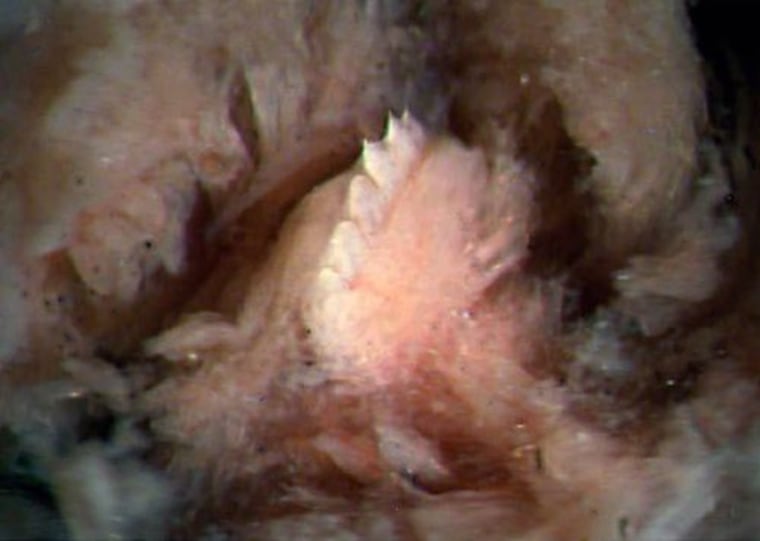An enormous-toothed leech, pulled from the nose of a girl who was bathing in a river, has just been documented in the journal PLoS ONE.
Named Tyrannobdella rex, which means "tyrant leech king," the new species of blood sucker sports its "ferociously large teeth" in a single jaw, but is less than 2 inches in length.
Found at remote parts of the Upper Amazon in Peru, the new species has led to a revising of the leech family that feeds from the body orifices of mammals.
"Because of our analysis of morphology and DNA, we think that Tyrannobdella rex is most closely related to another leech that gets into the mouths of livestock in Mexico," said Anna Phillips, a graduate student affiliated with the American Museum of Natural History and the first author of the paper. "We think the leech could feed on aquatic mammals, from their noses and mouths for example, where they could stay for weeks at a time."
The find adds to the some 700 known species of leeches worldwide. Since they exist far and wide, it's thought that these organisms had a common ancestor that lived on Pangea, the huge prehistoric land mass that broke up and eventually led to today's continents.
"We named it Tyrannobdella rex because of its enormous teeth," explained Mark Siddall, who also worked on the study and is a curator in the Division of Invertebrate Zoology at the American Museum of Natural History.
Siddall added, "Besides, the earliest species in this family of these leeches no-doubt shared an environment with dinosaurs about 200 million years ago when some ancestor of our T. rex may have been up that other T. rex's nose."
"The new T. rex joins four other species that use this abbreviated name, including two Miocene fossils (a snail and a scarab beetle), a living Malaysian formicid ant, and, of course, the infamous Cretaceous theropod dinosaur that was described in 1905 by an earlier curator of the American Museum of Natural History."
To read the full journal paper, which includes a few additional images, please go to this PLoS ONE page.
